
by Harvey Leifert Friday, March 15, 2013
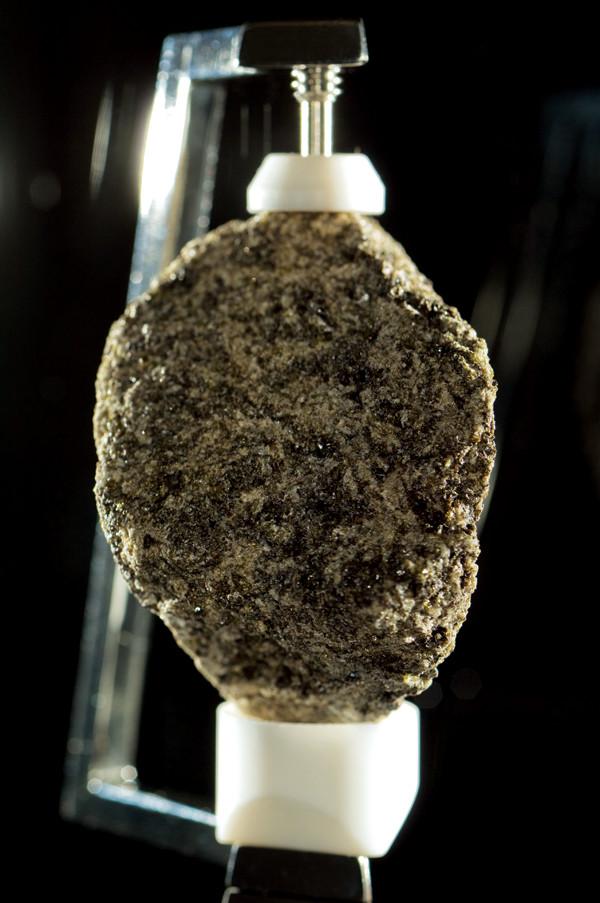
Lunar sample on display at Arizona State University. Arizona State University, Tom Story
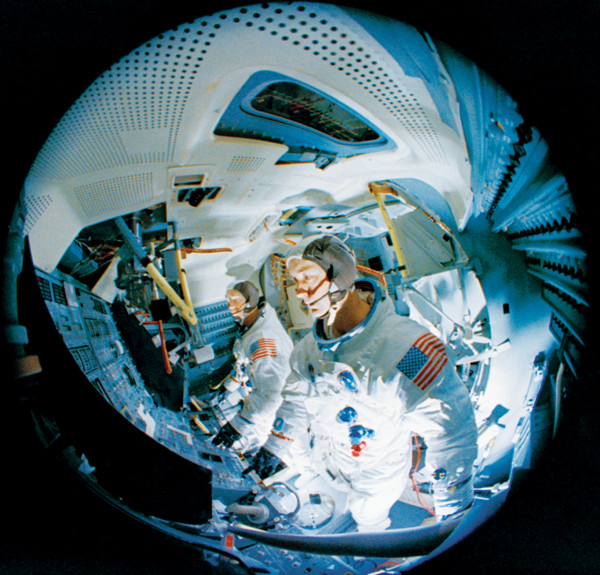
Astronauts James McDivitt and Russell Schweickart inside the Apollo Lunar Module Mission Simulator at the Kennedy Space Center in Florida. NASA
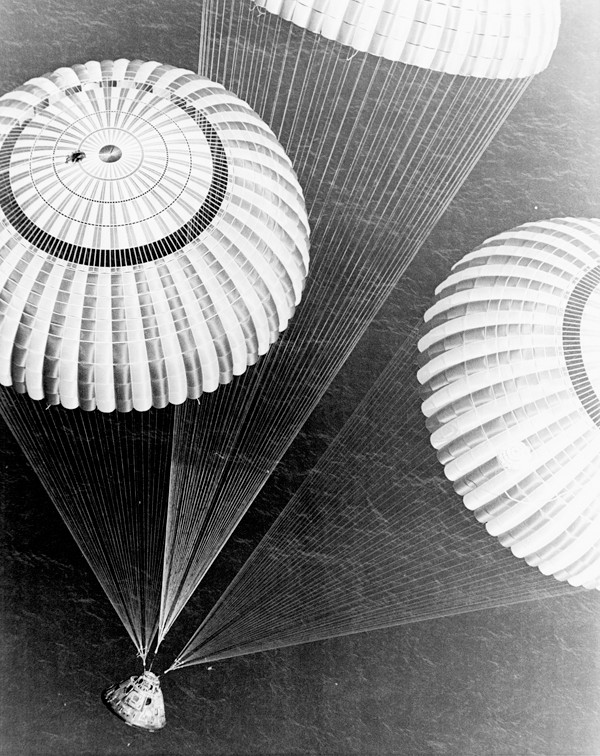
The Apollo 17 spacecraft, containing astronauts Cernan, Evans and Schmitt, glided to a safe splashdown in the Pacific Ocean on Dec. 19, 1972, completing NASA's sixth and last manned lunar landing mission. NASA
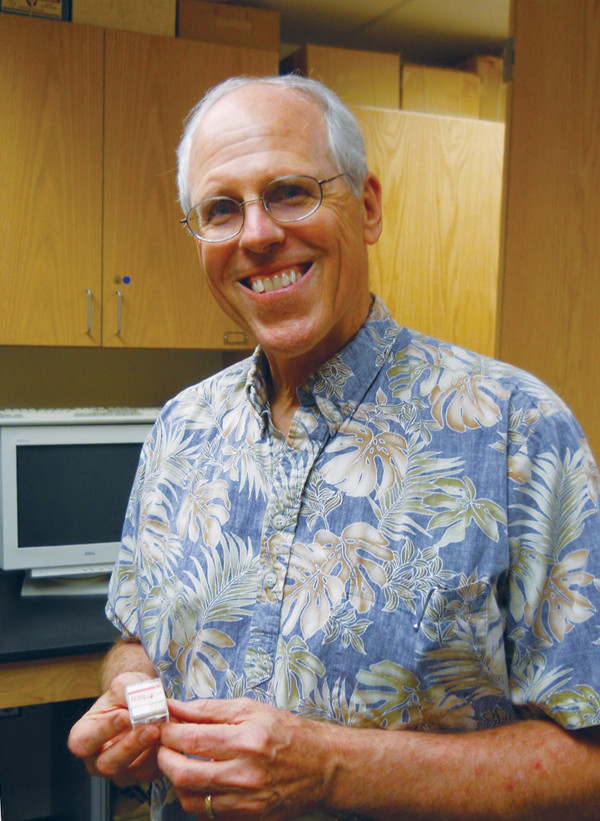
University of Hawaii lunar geochemist Jeffrey Taylor, who has studied moon rocks for more than four decades, holds a small plastic sample box containing a chip of moon rock. courtesy of the University of Hawaii
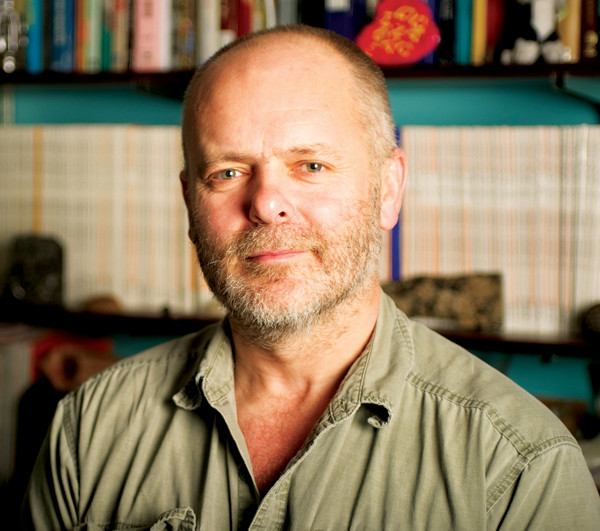
Notre Dame civil engineer and geologist Clive Neal has been studying moon rocks since the late 1980s. courtesy of Clive Neal
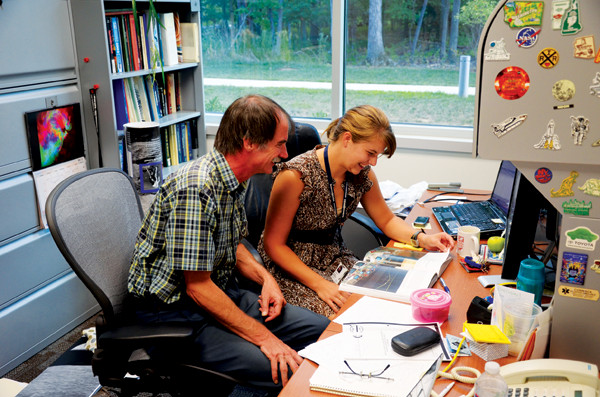
Undergraduate student and NASA intern Marie McBride and NASA scientist David Williams work to uncover lunar secrets in long-lost data from the Apollo missions. courtesy of Marie McBride
“The gift that keeps on giving” is a phrase that has been applied to everything from phonographs and magazine subscriptions to charitable donations. The same could be said of the 382 kilograms of lunar rocks brought back to Earth by the Apollo astronauts more than 40 years ago. There is no less an authority on the subject than the last man to step onto the moon, geologist and astronaut Harrison Schmitt.
“There are exciting times still afoot with the lunar samples; they’re the gift that keeps on giving and that will keep on giving as analytical techniques improve, new ideas come along, and young people start to look at them with more imagination,” said Schmitt in December at the annual meeting of the American Geophysical Union (AGU) in San Francisco, Calif. The only professional geologist to walk on the moon, he was speaking during a session commemorating the 40th anniversary of the Apollo 17 mission and celebrating the scientific achievements of the entire Apollo program.
Apollo 17 splashed down in the Pacific Ocean on Dec. 19, 1972, ending the era of manned flights to the moon for the foreseeable future. During the mission, Schmitt along with astronauts Eugene Cernan and Ronald Evans collected and brought back 111 kilograms of lunar rocks, far more than any previous mission. Only 19 kilograms of the total Apollo haul were allocated to scientific research at the time. Some rocks were presented as gifts to foreign heads of state or for display in museums and planetariums. Some have mysteriously vanished. Most of the rest remain locked away for future study in NASA’s facility in Houston, Texas. That future is now.
“After 40 years, I sense that there’s no diminution of the excitement that one can feel about lunar science — or about what it is going to tell us about the early history of the Earth,” Schmitt said. He suggests today’s lunar scientists are like detectives who reopen old criminal cases and examine them anew with modern instruments and techniques like DNA analysis. Armed with data and analytical techniques not available in the 1970s, scientists are re-examining Apollo moon rocks and learning more than ever before about our nearest celestial neighbor.
In the years following the Apollo missions, researchers studying the moon rocks learned a lot about the moon.
For instance, breccia and basalt returned in 1969 from Tranquility Base by the Apollo 11 mission — not considered primarily a science mission — revealed the moon was far older than had been expected by most scientists and the early solar system history was recorded there, Schmitt said. Other rocks provided a wealth of geochemical information, such as the discovery of an area much richer in titanium than is typically found on Earth. Regolith, or surface debris, yielded extensive information on solar wind volatiles, such as helium-3 isotopes, as well as data on hydrogen, oxygen, nitrogen and carbon that are relevant for planning manned missions to Mars. Apollo rocks also confirmed that certain meteorites found on Earth, including some found in Africa, Antarctica and Asia, were blasted from the moon.
In recent years, researchers around the country have been extracting new knowledge from Apollo moon rocks. These “cold case” scientists cover a wide range of disciplines and institutional bases.
Clive Neal, a professor of civil engineering and geological sciences at the University of Notre Dame, has been working with about 320 lunar samples from all six Apollo missions that landed on the moon. His fascination with the moon began when his father woke him early on July 21, 1969, in England, to watch the first human walk on the moon. He first worked with moon rocks as a post-doctoral researcher under Lawrence Taylor at the University of Tennessee in the late 1980s.
Now, Neal says, analytical technologies not available at that time allow for petrographic analysis — microscopic examination of thin slices of rocks — to determine the ways in which minerals in the rocks formed and how they have changed and interacted with each other. The technique, called quantitative petrography, is not new to materials analysis, Neal notes, but has never before been applied to lunar samples. It helps researchers distinguish, for example, between basalts that crystallized from melted lunar mantle and those that formed due to meteor or asteroid impacts on the moon’s surface. Traditional qualitative petrographic examination of thin igneous rock sections would not make this distinction, he says.
Quantitative petrography would also be helpful following future sample return missions, such as to the South Pole Aitken Basin, the moon’s oldest-known impact structure, dated to 3.9 billion years ago, Neal says. Samples are precious, he says, and by analyzing just a thin section of a rock, scientists can preserve the remainder for other studies.
At the University of Hawaii, lunar geochemist Jeffrey Taylor has been studying moon rocks for four decades. He began as a post-doctoral fellow under John Wood at the Harvard-Smithsonian Center for Astrophysics just after Apollo 11. Now, he is concentrating on the moon’s water and chemical composition, utilizing both improved and new technologies that did not exist earlier in his career.
Principal among these new techniques, Taylor says, is secondary ion mass spectrometry (also called ion microprobe), which can be used to analyze the water content in the lunar rocks. Specifically, he is studying evolved igneous rocks that crystallized below the moon’s surface at high pressures, which minimized loss of water from the magma. The water concentrations are very low, but not nonexistent as once assumed, he says, noting that the analyses could not have been made at the time of the Apollo missions because instruments back then were not sensitive enough.
To help refine estimates of the moon’s chemical composition and structure, Taylor is combining analyses of lunar rock samples with recent data from the twin probes of NASA’s 2012 GRAIL mission, which studied lunar gravity and provided a detailed picture of the thickness of the moon’s crust. Other scientists are also using GRAIL data in conjunction with Apollo rock samples, including Walter Kiefer, of the Lunar and Planetary Institute in Houston, Texas, who is studying the porosity of lunar rocks.
Young scientists are making a contribution to lunar research as well. One, who shared the platform with Schmitt at the AGU meeting, is Marie McBride, an undergraduate student at the Florida Institute of Technology who, since 2011, has been interning part time at NASA’s Goddard Space Flight Center in Greenbelt, Md. McBride, who hopes to set foot on the moon one day herself, conducted a painstaking analysis of long-ignored Apollo data, under the guidance of NASA scientist David Williams.
McBride’s project demonstrates that Apollo’s ongoing contribution to research is not limited to rock samples. Her data source is the Apollo Lunar Surface Experiments Package (ALSEP), a part of every Apollo mission, starting with a scaled-down version on Apollo 11. ALSEP was a suite of instruments, somewhat different on each mission, deployed about 100 meters from the lander. Some of the ALSEP experiments radioed data back to Earth for up to seven years.
Now, one of those experiments is the source of new information about solar radiation on the lunar surface. On Apollo 11, 12, 14 and 15, ALSEP included the Dust, Thermal and Radiation Engineering Measurements Package (DTREM), a juice box-sized instrument composed of three solar cells and three thermometers that was designed to study the long-term effects of dust, incoming solar radiation and temperature at the lunar surface. Over time, the solar panels measured damage they sustained from both radiation and dust. “There were data points taken every 54 seconds for five to seven years; therefore, the dataset was massive,” McBride says.
The original magnetic tapes of DTREM data were misplaced at some point, according to the original principal investigator, James Bates. NASA had made a microfilm copy of the data stream for archival purposes, but the film version, due to its size, was not by itself amenable to scientific analysis, McBride says.
Then, a few years ago, NASA discovered that the raw communications stream containing what was known as the “housekeeping” data from the ALSEPs had been preserved. “These,” McBride says, “were the general data comprising the times, temperatures, voltages, ground commands, etc., for the central [ALSEP] station in the form of binary words.” They had been recorded on magnetic tape and saved by Yosio Nakamura, one of the original ALSEP investigators.
“When we combined the microfilm data with the communications stream, we were able to use the microfilm as a ‘Rosetta Stone’ to create a digital dataset for the first time,” McBride said at AGU. “Thankfully Dr. Nakamura preserved this information for all these years; without it the data could not have been digitally restored. The raw DTREM output was embedded in these data and could be extracted and compared to the microfilm record,” she adds.
That allowed McBride and colleagues to unveil a graphic record of Apollo 15 dust and radiation levels from 1971. Lunar days and nights are marked by a series of peaks and troughs, respectively, indicated by changes in output from each solar cell. Lunar eclipses are marked by sudden drop-offs in output.
Among the first findings from McBride’s two-year DTREM analysis that corroborated earlier work was the major degradation experienced by one of the solar cells over time and especially during the August 1972 solar particle event, which hit the moon. “Thankfully, no astronauts were on the moon at this time, but it is believed that an event of this magnitude might have presented a severe radiation hazard,” McBride said. The degraded cell was uncovered, while one of the others had been covered and suffered much less damage over the same period. The third cell, which had been damaged by radiation before arriving on the moon, showed little further degradation.
In other work, researchers are using recent images, such as from the ongoing Lunar Reconnaissance Orbiter (LRO) mission, to corroborate independent research findings. For example, scientists concluded from LRO images — in which they could see the Apollo 15 landing site, including the ALSEP equipment, the astronauts’ footprints, and tracks made by the astronauts’ rover during the mission — that dust buildup was an extremely slow process, indirectly supporting other evidence showing that dust was not a significant factor in the degradation of the DTREM solar cells and that most of the damage was caused by solar radiation, McBride says. DTREM data will be of great importance when astronauts eventually return to the moon for extended missions, she says, because it is imperative to understand the long-term effects of radiation on the lunar environment.
At the AGU meeting, Schmitt urged that new data from current missions, like LRO and the recently completed GRAIL mission, be correlated with data from the past, ideally by younger scientists with fresh ideas.
Some 450,000 Americans were involved in the Apollo program, he noted, and the average age of the scientists and engineers was about 25. “The astronauts, for example, were among the older people in the program; we were generally in our 30s; the middle-level managers were generally in their 30s and early 40s,” he recalled. “It really was a young person’s program.”
And it should remain as such, he said. The U.S. needs to assemble a corps of young people equally dedicated and well supported organizationally, Schmitt said. “We have to design it so that it can, through multiple generations, stay young.”
© 2008-2021. All rights reserved. Any copying, redistribution or retransmission of any of the contents of this service without the expressed written permission of the American Geosciences Institute is expressly prohibited. Click here for all copyright requests.